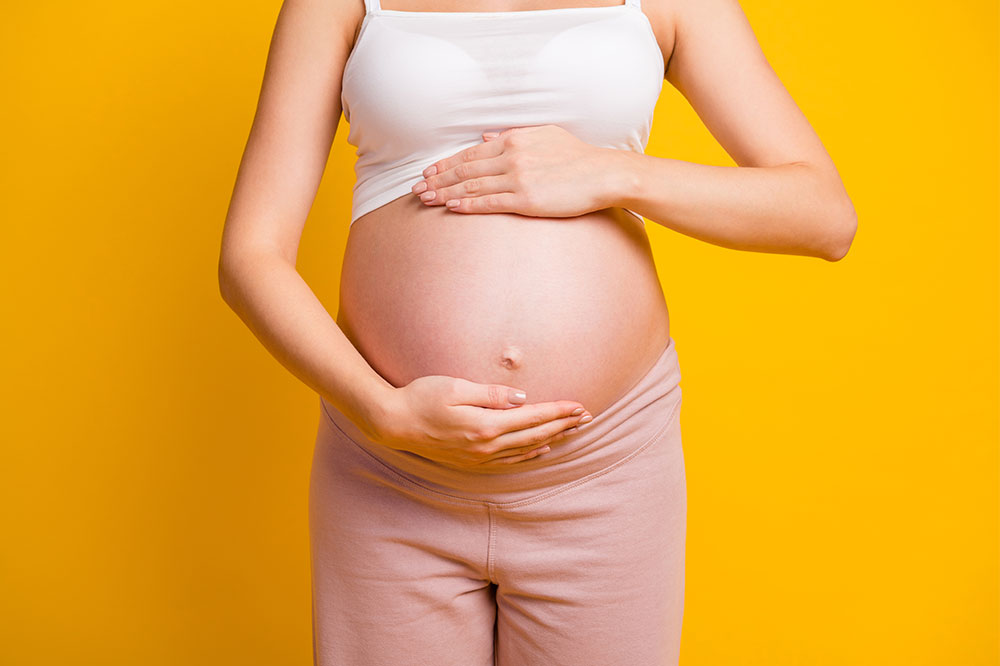Comprehensive Guide to Pregnancy: Understanding the Three Trimesters and Key Changes
This comprehensive guide explores the three key stages of pregnancy—the first, second, and third trimesters—highlighting the physical, hormonal, and developmental changes that occur. It offers valuable insights into symptoms, milestones, and the importance of prenatal care, helping expectant mothers prepare for each phase of this transformative journey. Whether you're in early pregnancy or nearing delivery, understanding these stages is essential for a healthy, informed pregnancy experience.

In-Depth Overview of the Three Pregnancy Stages: First, Second, and Third Trimesters
Pregnancy is one of the most profound and transformative journeys a woman can experience. It embodies a period of rapid development, hormonal fluctuations, and physical adaptations as the body nurtures new life. While each woman's pregnancy journey is unique, understanding the common milestones across the three trimesters can help expectant mothers, families, and caregivers prepare for the upcoming changes. Typically lasting about 40 weeks from conception to delivery, pregnancy involves intricate processes starting from fertilization to full-term development. This detailed guide explores every stage, highlighting typical symptoms, physical transformations, and key milestones to expect during each trimester.
Fertilization and Embryonic Implantation
The beginning of pregnancy starts with conception, which generally occurs within the first two weeks of the menstrual cycle. Around days 6 to 14, ovarian follicles mature and prepare to release an egg during ovulation, usually around day 14 of a typical cycle. A surge in luteinizing hormone prompts ovulation, releasing a mature egg from the ovary. This egg journeys through the fallopian tube toward the uterus, a process taking approximately five days. If sperm, deposited during intercourse, encounters this egg, fertilization occurs, resulting in the formation of a single fertilized cell, called a zygote.
Following fertilization, the zygote travels toward the uterus where it attaches to the uterine lining in a process called implantation. This marks the official start of pregnancy. The developing embryo continues to grow as it implants, and hormonal changes begin to support the pregnancy, including increased levels of human chorionic gonadotropin (hCG), which can be detected in pregnancy tests.
Pregnancy is typically divided into three distinct stages or trimesters, each lasting roughly 12 to 13 weeks. During these phases, both the mother and the developing baby experience significant physical and developmental changes. Understanding these stages helps in recognizing common symptoms, preparing for medical care, and establishing a healthy pregnancy journey.
The First Trimester: Foundations of Pregnancy (Weeks 1-12)
The first trimester marks the initial 12 weeks of pregnancy, a crucial period for embryonic development. During this time, important physical and hormonal changes occur, setting the stage for the coming months. The body begins adjusting to rapidly fluctuating hormone levels—primarily progesterone, estrogen, and hCG—which influence many physiological functions. Common early symptoms include fatigue, heightened sensitivity in the breasts, frequent urination, nausea, and emotional fluctuations.
Hormonal shifts lead to various discomforts such as morning sickness, which although often peaks around weeks 8 to 10, can persist longer for some women. Digestive slowdown caused by increased progesterone may result in constipation, heartburn, and bloating. Blood volume increases to supply nutrients to the growing embryo, and the uterus begins to enlarge. Despite its small size in early weeks, the embryo undergoes rapid cell division and organ formation, making this phase vital for healthy development.
Physical changes are subtle during the first trimester, but women might notice slight signs like tender breasts, increased fatigue, and sometimes light spotting known as implantation bleeding. Mental health is also an important aspect during this stage, with mood swings and anxiety common due to hormonal fluctuations. Regular prenatal care is essential during these weeks to monitor the health of both mother and fetus, perform necessary screenings, and address any potential concerns early on.
The Second Trimester: The Peak of Comfort (Weeks 13-26)
The second trimester is often regarded as the most comfortable phase of pregnancy. As the body adjusts to the changes from the first trimester, many women experience relief from early symptoms like nausea and fatigue. This period, spanning from weeks 13 to 26, brings significant physical development and noticeable changes that signal progress in pregnancy. During this stage, the fetus grows rapidly, and the mother's body continues to adapt to support fetal health and growth.
As the pregnancy progresses, women begin to gain more noticeable weight, with a growing baby bump becoming evident. The skin stretching to accommodate the expanding uterus may cause itching, and some women develop fascinating skin changes like the darkening of the areolas or a line running from the navel to the pubic area, known as the linea nigra. Increased blood flow and hormonal activity can lead to the development of new skin pigmentation or dark patches.
One of the most exciting milestones of this stage is feeling fetal movement, often called quickening. Typically felt between 16 and 18 weeks, these gentle flutters or kicks reaffirm the baby's growth and activity within the womb. Around week 20, most women reach the halfway point of pregnancy, which is celebrated as a major milestone.
Physical discomforts during this trimester may include pelvic pressure, back pain, and round ligament pain as the uterus expands. Pregnant women also notice changes such as swollen ankles, varicose veins, and increased breast size, with some starting to produce colostrum, an early form of breast milk. Routine ultrasounds and screenings are usually scheduled during this period to assess fetal development and catch any potential issues early.
The Third Trimester: Preparing for Birth (Weeks 27 to Delivery)
The third trimester marks the final phase of pregnancy, beginning around week 27 and lasting until childbirth. During this crucial time, the fetus continues to grow rapidly, gaining weight and developing organs ready for life outside the womb. The mother's body undergoes significant changes to accommodate the increasing size of the baby, which can cause several discomforts and physical symptoms.
As the uterus enlarges to its maximum size, it exerts pressure on surrounding organs, leading to symptoms such as shortness of breath, heartburn, and swelling in the extremities, including feet and ankles. Increased fluid retention can cause noticeable limb swelling, while the growing baby presses on the bladder, resulting in frequent urination. Back pain becomes more prominent due to the shifting center of gravity and added weight.
The skin may stretch further, resulting in stretch marks, and pigmentation changes such as dark patches on the skin, are common. Breasts prepare for breastfeeding by producing colostrum, which can leak from the nipples. As the due date approaches, women might experience Braxton-Hicks contractions—irregular, painless contractions that prepare the body for labor. These "false labor" contractions can be confusing but serve as a sign that the body is practicing for delivery.
During this stage, healthcare providers monitor cervical dilation, baby's position, and overall maternal health to ensure a safe and healthy delivery. Around week 39, the cervix begins to soften and thin out (effacement), signaling that labor may occur soon. The physical and emotional preparations for childbirth intensify as women prepare for their upcoming labor and delivery experience.
Understanding each stage of pregnancy enables expectant mothers and their families to navigate this transformative journey with more confidence. Regular prenatal visits, a healthy diet, appropriate physical activity, and emotional support are crucial throughout all stages. While symptoms and experiences can vary widely, staying informed and prepared helps promote a positive pregnancy experience and fosters better outcomes for mother and baby.





